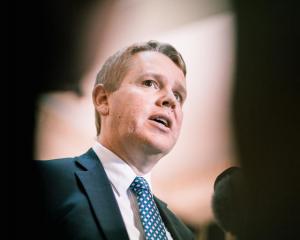
Big decisions loom — particularly about land use and how more space for water might be created in the coming decades — and Dunedin city councillors yesterday considered risks of both moving too slowly and, alternatively, rushing.
Much of their discussion was about striking a wise balance between planning and action at a time when there appears to be a need for speed but information to help decision-making is still being gathered.
Cr Christine Garey said climate change was having drastic effects in the world — evident in recent events such as wildfires and a heatwave — but she cautioned against knee-jerk reactions.
"This is a time not to rush forward but to hold our nerve, be bold when it comes to making decisions and make damn sure we base them on evidence," she said.
Referring to discussions soon to be had about the council’s 2024-34 long-term plan, Cr Garey said "we will be called on to make investment".
Dunedin deputy mayor Sophie Barker said it was crucial to get across the council was committed to South Dunedin and had a plan for its future.
The South Dunedin Future programme is aimed at setting up the area — comprising about 6500 properties — to adjust to climate change and preserve it to a significant extent as a place to live.
An update on the programme was discussed by an Otago Regional Council committee last week and then the Dunedin City Council’s strategy, planning and engagement committee yesterday.
Programme manager Jonathan Rowe said considerable planning had been done and the programme was about to accelerate.
Decisions would soon be required on "chunky" issues, he said.
Options for a long-list of proposed actions have yet to be clearly defined and are expected to be put in front of the public for debate early next year.
Cr Jim O’Malley was keen to see some action ahead of the strategy’s expected completion in 2026.
Mr Rowe confirmed there would be.
Cr O’Malley argued that a mentality of looking to avoid infrastructure investment mistakes could itself generate risks of insufficient preparation.
He also said the notion everyone would have to leave the area had seemingly been put to rest, but "what we do to stay is going to be complex".
Council infrastructure and development general manager Simon Drew said the broad aim was to get the right infrastructure in the right places. Ill-considered moves could backfire, he said.
Cr Kevin Gilbert sought reassurance the strategy’s results would be delivered quickly enough and, if it looked like they might not be, contingencies could be deployed.
Mr Rowe said the strategy was crucial, but activity would be happening in the meantime.
The programme should move as fast as reasonably possible, he said.
It was planning for "scary scenarios" while looking to avoid overreacting, Mr Rowe said.
Dunedin Mayor Jules Radich asked about short-term measures.
Mr Drew said "quick wins" had been done and the focus was now on longer-term planning.
Advertisement












